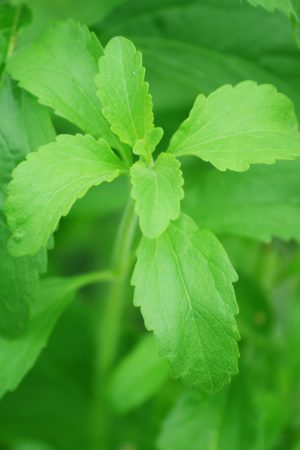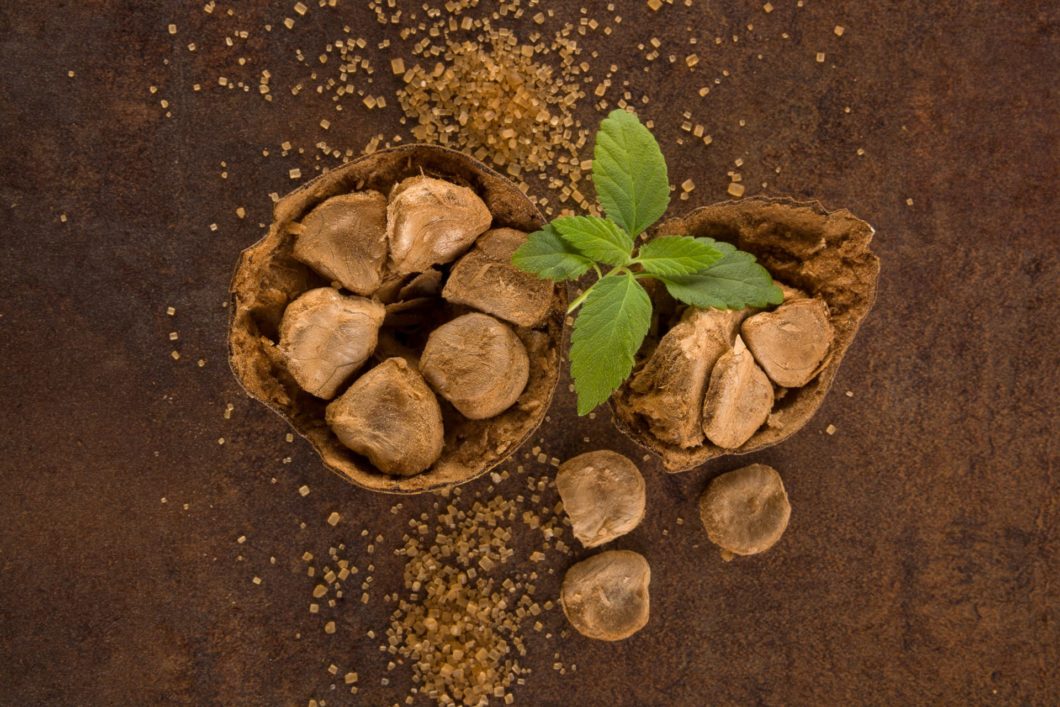Product development • Do you want to replace sugar with something less caloric but just as sweet? Then you have many challenges to tackle. One of them is the off-taste and aftertaste of the ingredients that replace sugar. Let's look at how you can go about it.
If you are going to replace sugar with something less caloric but just as sweet, a high-intensity sweetener is a must. But with it come undesirable side effects. This applies regardless if you choose an artificial sweetener (such as aspartame, acesulfame K or sucralose) or naturally occurring steviol glycosides. The unwanted flavours can be masked by other flavours. But watch out! It can create new problems. It is a balancing act to get the right taste.
Side effects of steviol glycosides
It is hardly a secret that we prefer steviol glycosides every day of the week. We think it is a fantastic sweetener. And it is the only naturally occurring high-intensity sweetener approved in the EU for general use in food.
But like all high-intensity sweeteners, steviol glycosides come with undesirable side effects. They have some bitterness and a taste that is reminiscent of liquorice and is sometimes described as metallic. The liquorice-like flavour also lingers for a while.
So when steviol glycosides are used, the bitterness and liquorice flavour needs to be masked.
But wait a minute! Not all steviol glycosides are the same.
Steviol glycosides without unwanted taste

Initially, foods sweetened with stevia extract had a rather bitter taste. It came from stevioside, which is the steviol glycoside most commonly found in the leaves of the plant stevia, from which steviol glycosides are extracted.
But nowadays the most popular steviol glycoside is Rebaudioside A, which in short is called Reb A, consisting of 50 to 98 per cent of steviol glycoside. It is not as bitter at all, which makes the liquorice-like off-taste more noticeable.
And now more and more companies start to use Rebaudioside M (Reb M), which is the most sugary steviol glycoside of them all. It has practically no unwanted off-taste and no pungent aftertaste.
But despite the good qualities of Reb M, Reb A is often preferred. And then we still have to deal with the off-taste and after-taste.
Off-taste
There is a lot of talk about off-taste and aftertaste. But what is it really?
Usually, off-taste is caused by an undesirable substance that comes with a raw material, from a chemical change during the production or storage of food or from microorganisms.
But when we replace an ingredient with one or more other ingredients (which is often the case with sugar reduction) it becomes a little peculiar to talk about an ‘unwanted substance’. Steviol glycosides are highly desired, even if they do not taste exactly like sugar.
So a more appropriate definition of off-taste is simply a taste that is not desired. It contains both flavours from unwanted substances and flavours that are found in a substitute for an ingredient but which are not in the ingredient it replaces.
Aftertaste
Aftertaste is easier to define. It is the taste that lingers in the mouth after that which gave the taste has vanished.
Note that both the desired taste and the off-taste can have an aftertaste.
Aftertaste of an off-taste is, of course, as undesirable as the off-taste itself. If the off-taste can not be avoided, it needs to be masked, and then it is important to remember to also mask the aftertaste of the off-taste.
But even with the off-taste under control, the aftertaste can cause problems with sugar reduction. If sugar is replaced with other ingredients, we get a different aftertaste. On the one hand, the actual taste can be different. On the other hand, it can last for shorter or longer periods than sugar. This too should be masked.

Masking off-taste and unwanted aftertaste
It sounds like sugar reduction is somewhat of a masquerade. And yes, masking off-taste and unwanted aftertaste is a big part of the job of replacing sugar without changing the desired taste.
Unfortunately, there is no patent solution that can be used everywhere. What works depends on what other ingredients are already present or added and how they are processed. That is why it takes a long time and requires specialist knowledge (or luck) to find the right ingredients and the right proportions.
Ask the expert

This is Ola Boström, innovation manager at Bayn. We ask him for advice.
How should we handle the liquorice-like off-taste and aftertaste of steviol glycosides?
– There are different ways to choose from. One way is to mix different steviol glycosides to get a cost-effective final product that also tastes good.
– Another way is to add one or more ingredients that have the property of masking flavours. You can use one or more different ingredients that can produce synergy with the help of each other. They mask the taste experience so that the bitter liquorice-like taste does not emerge.
What ingredients can mask the taste?
– There are a variety of choices that all have pros and cons. You can, for example, use thaumatin. Sugar alcohols such as erythritol can also be used. A bonus with sugar alcohols is that they also give bulk. The same can be said for inulin, which is a dietary fibre with a sweet taste that can also mask. Fructose syrup and honey can also be used; Fructose is good at masking but contains a lot of calories. When monk fruit is approved in the EU, mogrosides can be used.
We thank Ola and take a closer look at the ingredients that Ola mentioned.
Thaumatin
Thaumatin is a protein found in the fruits of the West African plant katemfe (Thaumatococcus danielli).
Thaumatin is 2,000 to 3,000 times sweeter than regular sugar and is therefore considered a high-intensity sweetener. But most often it is used to enhance or mask flavours.
Both steviol glycoside and thaumatin have a super sweet taste with some bitterness and licorice-like taste and long aftertaste. It is easy to come to the conclusion that they together become even more bitter and liquorice-like, but the fact is that they mask each other. The bitterness and the liquorice taste become damped.
But thaumatin requires sure instinct. Due to its high sweetness, it requires know-how on dosage and mixing techniques.

Mogrosides
Another high-intensity sweet substance that also has a bitter taste is mogrosides, found in the fruit Luo Han Guo, called monk fruit in English. These too can be combined with steviol glycosides to remove each other’s off-tastes.
Mogrosides have long been cultivated in China and are today an established ingredient in many markets. But it is a precious commodity that is not yet approved in the EU. However, there are hopes that it will be approved within a year or so.
Fructose
Fructose is also good at masking the off-taste of steviol glycosides.
But it is important not to add too much. Fructose is a type of sugar with as many calories as regular sugar, so adding it counteracts the purpose of reducing sugar. But if the goal is not to remove as many calories as possible from the sugar, it may very well work.
Fructose can also be used when the goal of sugar reduction is primarily to reduce the effect on blood sugar levels. Fructose has only 25 per cent of the effect of regular sugar on the blood sugar level (GI 23 compared to GI 92, with white bread as a reference).
Inulin
Inulin is a dietary fibre first and foremost used to replace the bulk that is lost when you reduce sugar or fat. However, it has a discreet, sweet taste that can be used to mask the off-taste of steviol glycosides.
Inulin is found in a variety of vegetables, but it is mainly chicory root that is used in the preparation of inulin.
Inulin works well in many types of foods, but watch out for foods with low pH. Then hydrolysis can split inulin into shorter chains including fructose which is a type of sugar with as many calories as regular sugar.
As always with fibres, it is important not to have too much, as the beneficial bacteria of the colon break them down into short-chain fatty acids with gases as a bi-product.
So what about sugar alcohols?
Sugar alcohols are another group of maskers that can cause stomach upset. Therefore, it must be stated that excessive consumption may have a laxative effect if the product consists of more than ten per cent sugar alcohol.
Erythritol is an example of a sugar alcohol that works well with steviol glycosides. It is good at masking the off-taste, but it also adds volume and contributes to a mouth-watering resemblance to sugar.
There is however one problem.
Erythritol is endothermic, which causes it to absorb heat in contact with saliva, which is experienced as a cold in the mouth. Therefore, an unwanted off-taste can be replaced by an unwanted cold if you are not careful.
But the cooling effect is not always undesirable. It may be beneficial in some applications, such as chewing gum, cough drops and the like.
And in beverages, erythritol has no cooling effect, since the endothermic reaction – when erythritol comes into contact with water – has already occurred during manufacture.
Mixing steviol glycosides
Finally, we have the odd possibility of masking the off-taste of steviol glycosides with more steviol glycosides.
There are eleven steviol glycosides approved in the EU. But not all are available individually as most are very expensive to purify. The most abundant and easiest to purify steviol glycosides can be purchased. For example, purified extracts of the steviol glycoside Reb A can be purchased at 50, 60, 80 up to 99 per cent purity. The remainder of the extract is stevioside and other steviol glycosides.
There is also great variation between stevia extracts from different refineries, although they have the same degree of purity. As with wine, the sweetness and taste of steviol glycosides vary with the conditions under which they are grown; different soils give different results.
In the same way, variations in weather can give great variation in batches from the same supplier.
As a food producer, you normally want to be certain that taste is consistent during the product life cycle. Therefore, it is important to choose a supplier that ensures consistent quality.
But you can also use the variations to your advantage. By combining stevia extracts with different concentrations of different steviol glycosides from different refineries, you can make them disguise each other’s side flavours.
But to prepare a mixture of suitable steviol glycosides on your own to get rid of unwanted flavours is, to say the least, difficult. Especially when it comes to dosing. For that, it is best to hire experts.
Trade-offs and pitfalls
As you probably understand, there are many trade-offs that must be made and pitfalls to avoid when it comes to sugar reduction and masking of unwanted flavours from high-intensity sweeteners.
Ultimately, it is a balancing act where you have to weigh the pros and cons of the various solutions. To reduce sugar and calories but still retain the sweetness and good taste, you may have to prepare for a slightly lower calorie reduction, a higher price or a risk of a little flatulence. The goal of the balancing act is to come up with a final product without major deficiencies.
But to do so requires theoretical knowledge and practical development work. Resources that cost time and money.
A helping hand
We are happy to provide a helping hand. We can also supply steviol glycosides with high quality at an advantageous price. And we can shorten your time to market with key solutions for a variety of application areas. Do not hesitate to contact us if you want to know more.
Please, share this article if you liked it.
[et_social_share]







